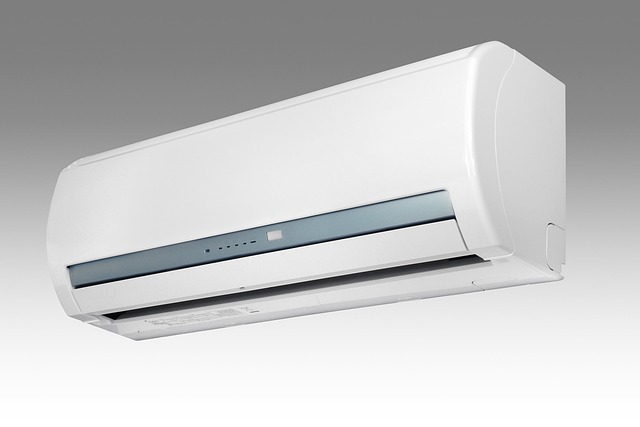How Dirty Air Ducts Affect Air Quality and Energy Efficiency
Dust in ductwork can restrict airflow and recirculate particles throughout a home. Over time, systems work harder and indoor air can feel stale. This article explains how buildup forms, when cleaning is recommended, and practical steps to keep air moving efficiently.

Indoor air moves through ductwork every time the system runs, carrying fine particles that can settle along metal or flexible ducts, coils, and registers. As layers grow, they can reduce airflow, contribute to odors, and disperse irritants into rooms. While no home is perfectly dust free, understanding how dirty ducts affect indoor air quality and energy use helps you choose practical maintenance steps that fit your home, climate, and equipment.
What are the air duct cleaning benefits?
Air duct cleaning benefits center on two outcomes many households value most: cleaner indoor air and steadier system performance. Removing accumulated dust, pet dander, and loose construction residue reduces the volume of particles that can reenter rooms when the blower starts. In systems with visible debris or microbial growth on nonporous duct walls, cleaning can also help limit recirculation of those contaminants. Another benefit is operational consistency. When debris is cleared from supply and return paths, registers can deliver air more evenly, helping rooms reach set temperatures with fewer hot and cold spots.
How does HVAC duct dust buildup cause airflow issues?
HVAC duct dust buildup narrows effective duct diameter and increases friction along the interior surface. That extra resistance creates airflow issues that show up as weak supply from distant vents, whistling at grilles, or a blower that runs longer to meet the thermostat. In severe cases, debris can settle on evaporator coils and blower wheels, adding drag and insulating surfaces that should shed or absorb heat efficiently. The result is higher static pressure, reduced airflow volume, and more energy consumed to deliver the same comfort level. Left unchecked, these stresses can shorten component life for motors and compressors.
Duct cleaning cost and frequency
How often to schedule cleaning depends on your conditions. Homes with shedding pets, recent renovations, wildfires or heavy outdoor dust, or occupants with sensitivities may benefit from more frequent inspection. Many households consider an inspection every one to two years and cleaning as needed, often every three to five years when buildup is evident. Cost is influenced by home size, number of supply and return registers, accessibility of ducts, local labor rates, and whether related services are added, such as coil cleaning, plenum cleaning, or sealing of obvious leaks. Quote-based assessments are typical because duct systems vary widely.
AC efficiency and filter maintenance
Filters are the first line of defense against debris entering the system. Using a correctly sized filter with an appropriate MERV rating for your equipment, commonly in the 8 to 13 range for residential systems, helps capture fine particles without excessively restricting airflow. Replace or wash filters on a schedule that reflects use and local air quality, often every one to three months in cooling or heating seasons. A clean filter and clear return pathway support lower static pressure, which allows the blower to move the right volume of air. That steadier airflow helps coils exchange heat efficiently, contributing to lower energy use and steadier comfort.
Professional duct cleaning vs DIY
DIY efforts can improve cleanliness at the registers but have limits inside the duct network. Homeowners can replace filters, vacuum and wipe supply and return grilles, and gently clean visible dust in the first few inches of ductwork. Deep cleaning typically requires negative pressure equipment, agitation tools designed for rigid or flexible ducts, and protective measures to prevent debris from entering rooms. Reputable firms follow industry guidelines, protect components like coils and blower assemblies, and document results with before and after images. For safety, avoid harsh chemicals on porous materials and be cautious with flexible ducting to prevent tears or kinks that would further restrict airflow.
Pricing and provider comparison
Pricing varies by market and system complexity, but most companies in the United States offer quote-based assessments after counting registers, evaluating access, and noting add-ons such as coil cleaning or dryer vent service. The ranges below reflect common residential scenarios and are intended to help frame expectations when contacting local services in your area.
| Product or Service | Provider | Cost Estimation |
|---|---|---|
| Whole home duct cleaning | Stanley Steemer | Quote based; common range 400 to 800 USD |
| Whole home duct cleaning | COIT Cleaning and Restoration | Quote based; common range 500 to 900 USD |
| Whole home duct cleaning | DUCTZ | Quote based; common range 500 to 1100 USD |
| Whole home duct cleaning | Servpro | Quote based; common range 450 to 900 USD |
Prices, rates, or cost estimates mentioned in this article are based on the latest available information but may change over time. Independent research is advised before making financial decisions.
How dirty ducts affect indoor air and energy use overall
Dirty ducts can worsen indoor air by recirculating dust and allergens and by distributing odors captured in debris. At the same time, buildup and leaks raise static pressure and reduce delivered airflow, so equipment must run longer to achieve setpoints. Over a season, that additional runtime can add noticeable energy use. A practical approach blends routine filter maintenance, periodic inspection, sealing and insulating accessible duct sections where needed, and targeted cleaning when debris is visible or comfort and airflow issues persist. This combination supports steadier indoor air quality and a more efficient, reliable system across changing seasons in the United States.




